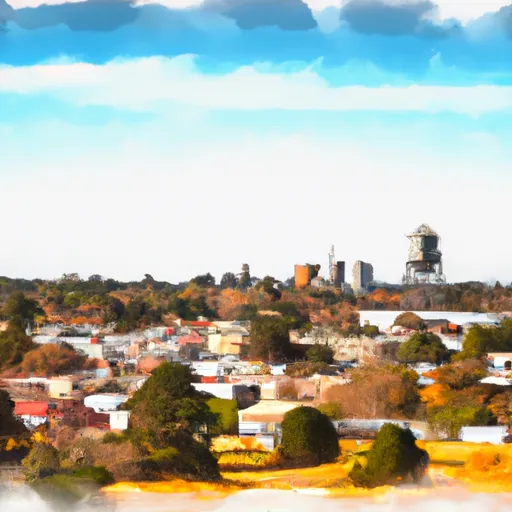-
 Snoflo Premium
Snoflo Premium
Get unlimited access to all our content
With no Ad interruptions! - Start Your Free Trial Login with existing account
Tupman
Eden Index
Climate
8.7
•
Recreation
3.8
•
Community
1.0
•
Safeguard
5.0/10

Tupman, California is a small unincorporated community located in Kern County. Situated in the southern end of the San Joaquin Valley, Tupman experiences a Mediterranean climate characterized by hot, dry summers and mild, wet winters. Average temperatures range from around 50°F (10°C) in winter to approximately 90°F (32°C) in summer, making it an ideal destination for those who enjoy warm weather.
In terms of hydrology constituents, Tupman is located near the Kern River, which is a vital water source for the region. The river provides opportunities for water-based activities such as fishing, boating, and kayaking. Additionally, Tupman is surrounded by agricultural lands and oil fields, contributing to the local economy.
For outdoor enthusiasts, Tupman offers various recreational opportunities. Nearby, the Kern National Wildlife Refuge provides opportunities for bird watching and exploring nature trails. The area is also known for its stunning desert landscapes, making it popular for hiking and off-roading adventures. Overall, Tupman offers a unique blend of natural beauty, a diverse climate, and recreational activities that can be enjoyed by locals and visitors alike.
What is the Eden Index?
The Snoflo Eden Index serves as a comprehensive rating system for regions, evaluating their desirability through a holistic assessment of climate health, outdoor recreation opportunities, and natural disaster risk, acknowledging the profound impact of these factors on livability and well-being.
Climate Health Indicator (CHI): 8.7
Tupman receives approximately
162mm of rain per year,
with humidity levels near 62%
and air temperatures averaging around
18°C.
Tupman has a plant hardyness factor of
9, meaning
plants and agriculture in this region tend to thrive here all year round.
By considering the ideal temperature range, reliable water supplies, clean air, and stable seasonal rain or snowpacks, the Climate Health Indicator (CHI) underscores the significance of a healthy climate as the foundation for quality living.
A healthy climate is paramount for ensuring a high quality of life and livability in a region, fostering both physical well-being and environmental harmony. This can be characterized by ideal temperatures, reliable access to water supplies, clean air, and consistent seasonal rain or snowpacks.
Weather Forecast
Streamflow Conditions
Tulare-Buena Vista Lakes
Area Rivers
Tulare-Buena Vista Lakes
Snowpack Depths
Tulare-Buena Vista Lakes
Reservoir Storage Capacity
Tulare-Buena Vista Lakes
Groundwater Levels
Recreational Opportunity Index (ROI): 3.8
The Recreational Opportunity Index (ROI) recognizes the value of outdoor recreational options, such as parks, hiking trails, camping sites, and fishing spots, while acknowledging that climate plays a pivotal role in ensuring the comfort and consistency of these experiences.
Access to outdoor recreational opportunities, encompassing activities such as parks, hiking, camping, and fishing, is crucial for overall well-being, and the climate plays a pivotal role in enabling and enhancing these experiences, ensuring that individuals can engage in nature-based activities comfortably and consistently.
Camping Areas
| Campground | Campsites | Reservations | Toilets | Showers | Elevation |
|---|---|---|---|---|---|
| Marian | 5 | 6,609 ft | |||
| Caballo | 5 | 5,799 ft | |||
| Buena Vista Aquatic Rec Area | None | 294 ft | |||
| Valle Vista | 7 | 4,824 ft | |||
| Ballinger | 20 | 3,128 ft |
Nearby Fishing
Catastrophe Safeguard Index (CSI):
The Catastrophe Safeguard Index (CSI) recognizes that natural disaster risk, encompassing floods, fires, hurricanes, and tornadoes, can drastically affect safety and the overall appeal of an area.
The level of natural disaster risk in a region significantly affects safety and the overall livability, with climate change amplifying these risks by potentially increasing the frequency and intensity of events like floods, fires, hurricanes, and tornadoes, thereby posing substantial challenges to community resilience and well-being.
Community Resilience Indicator (CRI): 1.0
The Community Resilience Indicator (CRI) recognizes that education, healthcare, and socioeconomics are crucial to the well-being of a region. The CRI acknowledges the profound impact of these elements on residents' overall quality of life. By evaluating educational resources, healthcare accessibility, and economic inclusivity, the index captures the essential aspects that contribute to a thriving community, fostering resident satisfaction, equity, and social cohesion.

